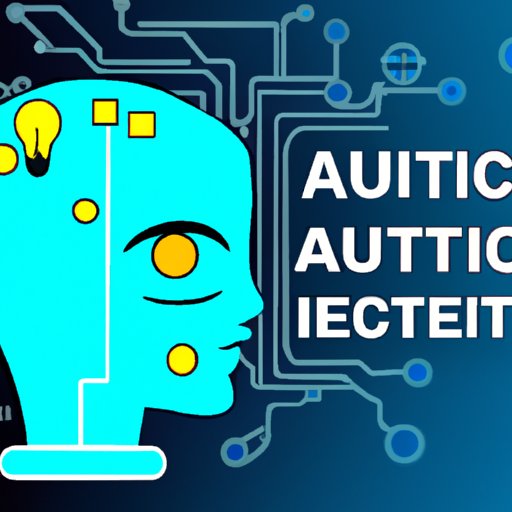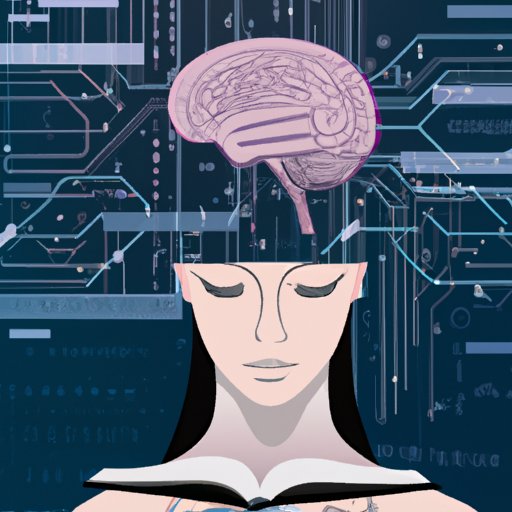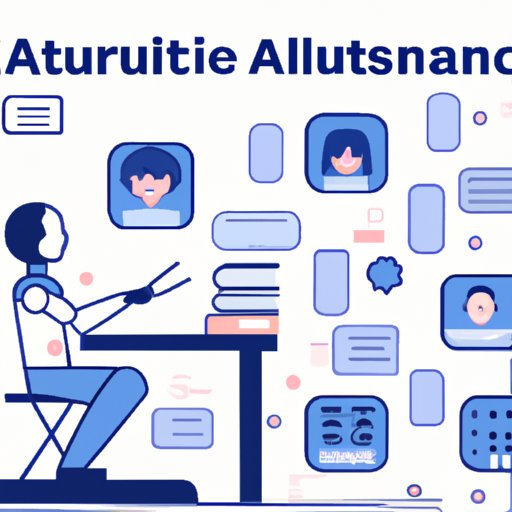Introduction
Artificial intelligence (AI) is a term used to describe computer systems that are designed to mimic human behavior. AI systems can be trained to recognize patterns and make decisions based on those patterns. In recent years, AI has become increasingly popular in the field of education. AI-enabled technologies are being used to create smarter and more personalized learning experiences for students. This article will explore the potential of AI in education and how it is transforming the way we learn.

Exploring the Potential of AI in Education
AI is being used to develop a range of tools and technologies that are being deployed in classrooms around the world. These tools can help teachers better engage with their students and create more effective learning environments. Here are some of the ways AI is being used in education:
AI-Powered Learning Tools
AI-powered learning tools are helping to improve the quality and effectiveness of teaching and learning. For example, AI-powered chatbots can be used to provide personalized feedback to students and help them stay on track with their studies. AI-powered tutoring systems can also be used to provide real-time guidance and feedback to students as they work through problems or practice new concepts.
AI’s Role in Personalizing Learning
AI can be used to personalize learning for each student. AI-driven algorithms can analyze data from students’ learning activities and suggest content that is tailored to their individual needs and interests. By leveraging AI, educators can create learning experiences that are tailored to each student’s unique abilities and preferences, leading to greater engagement and improved learning outcomes.
AI-Driven Assessment and Diagnostics
AI-driven assessment and diagnostics are helping educators to better understand how students are learning and identify areas where they may need additional support. AI-driven tools can analyze data from student assessments and provide real-time feedback to teachers about student performance. This information can then be used to inform instruction and help teachers adjust their teaching strategies to better meet students’ needs.

How AI is Transforming the Way We Learn
AI is transforming the way we learn in a number of ways. Here are some of the ways AI is impacting the way we learn:
AI-Enabled Learning Experiences
AI-enabled learning experiences are helping to make learning more engaging and interactive. AI-powered virtual reality (VR) and augmented reality (AR) technologies are being used to create immersive and interactive learning experiences. AI-driven simulations and games can also be used to help students visualize complex concepts and develop problem-solving skills.
Automation of Educational Tasks
AI is being used to automate a range of educational tasks, such as grading and providing feedback on assignments. AI-driven tools can analyze data from student assessments and provide real-time feedback to teachers about student performance. This can help teachers save time and effort, allowing them to focus more on providing personalized instruction to students.
The Impact of AI on Student Outcomes
AI is having a positive impact on student outcomes. Here are some of the ways AI is improving student outcomes:
Improved Student Engagement
AI-enabled learning experiences are helping to make learning more engaging and interactive. AI-powered virtual reality (VR) and augmented reality (AR) technologies are being used to create immersive and interactive learning experiences. AI-driven simulations and games can also be used to help students visualize complex concepts and develop problem-solving skills.
Increased Accessibility to Education
AI-enabled technologies are making education more accessible to students with disabilities. AI-driven tools can be used to create personalized learning experiences for students with special needs, such as providing audio descriptions of images for visually impaired students. AI-driven tools can also be used to provide real-time translations of text and audio for students who are learning in a language other than their native one.
Enhanced Learning Outcomes
AI-driven assessment and diagnostics are helping educators to better understand how students are learning and identify areas where they may need additional support. AI-driven tools can analyze data from student assessments and provide real-time feedback to teachers about student performance. This can help teachers adjust their instruction to better meet students’ needs and improve learning outcomes.
Conclusion
In conclusion, AI is having a significant impact on the way we learn. AI-enabled technologies are being used to create smarter and more personalized learning experiences for students. AI-driven tools are also being used to automate educational tasks and improve student engagement, accessibility, and outcomes. As AI continues to evolve, it is likely that its impact on education will only continue to grow.
(Note: Is this article not meeting your expectations? Do you have knowledge or insights to share? Unlock new opportunities and expand your reach by joining our authors team. Click Registration to join us and share your expertise with our readers.)
